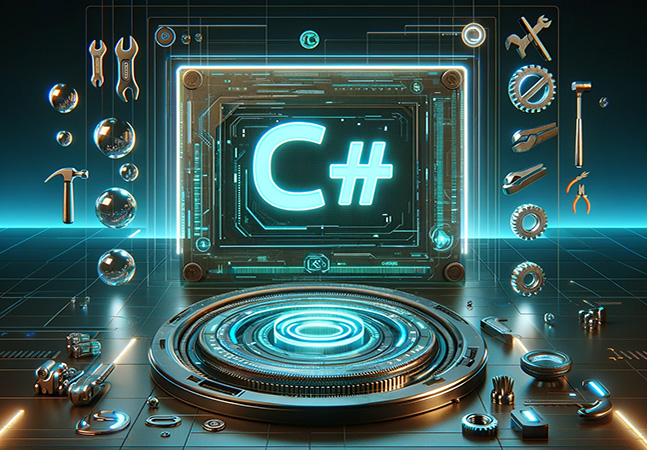
Dr. James McCaffrey from Microsoft Research presents a complete end-to-end demonstration of the naive Bayes regression technique, where the goal is to predict a single numeric value. Compared to other machine learning regression techniques, naive Bayes regression is usually less accurate, but is simple, easy to implement and customize, works on both large and small datasets, is highly interpretable, and doesn't require tuning any hyperparameters.
- By James McCaffrey
- 02/20/2025

At the upcoming Visual Studio Live! conference in Las Vegas, Marcel de Vries, Global MD & CTO at Xebia, will present a session on how developers can leverage Semantic Kernel to build AI-enhanced applications with C#.

Dr. James McCaffrey from Microsoft Research presents a complete end-to-end demonstration of the random neighborhoods regression technique, where the goal is to predict a single numeric value. Compared to other ML regression techniques, advantages are that it can handle both large and small datasets, and the results are highly interpretable.
- By James McCaffrey
- 02/03/2025

We often hear about the big new features in .NET or C#, but what about all of those lesser known, but useful new features? How exactly do you use constructs like collection indices and ranges, date features, and pattern matching?

Dr. James McCaffrey from Microsoft Research presents a complete end-to-end demonstration of the random forest regression technique (and a variant called bagging regression), where the goal is to predict a single numeric value. The demo program uses C#, but it can be easily refactored to other C-family languages.
- By James McCaffrey
- 01/02/2025

Dr. James McCaffrey from Microsoft Research presents a complete end-to-end demonstration of the AdaBoost.R2 algorithm for regression problems (where the goal is to predict a single numeric value). The implementation follows the original source research paper closely, so you can use it as a guide for customization for specific scenarios.
- By James McCaffrey
- 12/16/2024

Dr. James McCaffrey from Microsoft Research presents a complete end-to-end demonstration of data clustering and anomaly detection using the DBSCAN (Density Based Spatial Clustering of Applications with Noise) algorithm. Compared to other anomaly detection systems based on data clustering, DBSCAN can find significantly different types of anomalies.
- By James McCaffrey
- 11/06/2024

Dr. James McCaffrey from Microsoft Research presents a complete end-to-end demonstration of the Winnow classification technique. Winnow classification is used for a very specific scenario where the target variable to predict is binary and all the predictor variables are also binary.
- By James McCaffrey
- 10/15/2024

Dr. James McCaffrey of Microsoft Research presents a full demo of k-nearest neighbors classification on mixed numeric and categorical data. Compared to other classification techniques, k-NN is easy to implement, supports numeric and categorical predictor variables, and is highly interpretable.
- By James McCaffrey
- 10/01/2024

Dr. James McCaffrey from Microsoft Research presents a complete end-to-end program that explains how to perform binary classification (predicting a variable with two possible discrete values) using logistic regression, where the prediction model is trained using batch stochastic gradient descent with weight decay.
- By James McCaffrey
- 09/16/2024

Dr. James McCaffrey from Microsoft Research presents a C# program that illustrates using the AdaBoost algorithm to perform binary classification for spam detection. Compared to other classification algorithms, AdaBoost is powerful and works well with small datasets, but is sometimes susceptible to model overfitting.
- By James McCaffrey
- 09/03/2024

Dr. James McCaffrey of Microsoft Research presents a full-code, step-by-step tutorial on a "very tricky" machine learning technique.
- By James McCaffrey
- 05/15/2024

Microsoft's C# Dev Kit extension for Visual Studio Code has been updated to more easily wrangle NuGet packages, run/debug .NET Aspire applications, see the active document in Solution Explorer and acquire the .NET SDK within the editor.

Dr. James McCaffrey of Microsoft Research tackles the process of examining a set of source data to find data items that are different in some way from the majority of the source items.
- By James McCaffrey
- 04/15/2024

Chances are if you've had many coding interviews you've been presented with a poker problem. Here's a great take from Dr. James McCaffrey of Microsoft Research.
- By James McCaffrey
- 04/04/2024

Dr. James McCaffrey of Microsoft Research presents a full-code, step-by-step example of machine learning technique to visualize high-dimensional data.
- By James McCaffrey
- 03/15/2024

Dr. James McCaffrey of Microsoft Research presents a full-code, step-by-step tutorial on technique for visualizing and clustering data.
- By James McCaffrey
- 03/01/2024

Dr. James McCaffrey of Microsoft Research presents a full-code, step-by-step tutorial on a classical ML technique that transforms a dataset into one with fewer columns, useful for creating a graph of data that has more than two columns, for example.
- By James McCaffrey
- 02/16/2024

Dr. James McCaffrey of Microsoft Research presents a full-code, step-by-step tutorial on an implementation of the technique that emphasizes simplicity and ease-of-modification over robustness and performance.
- By James McCaffrey
- 02/01/2024

Transforming a dataset into one with fewer columns is more complicated than it might seem, explains Dr. James McCaffrey of Microsoft Research in this full-code, step-by-step machine learning tutorial.
- By James McCaffrey
- 01/17/2024